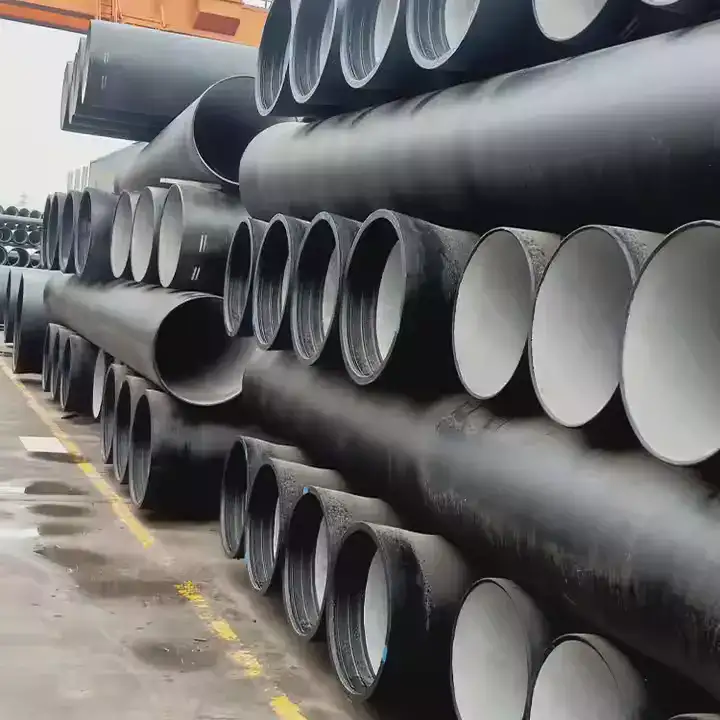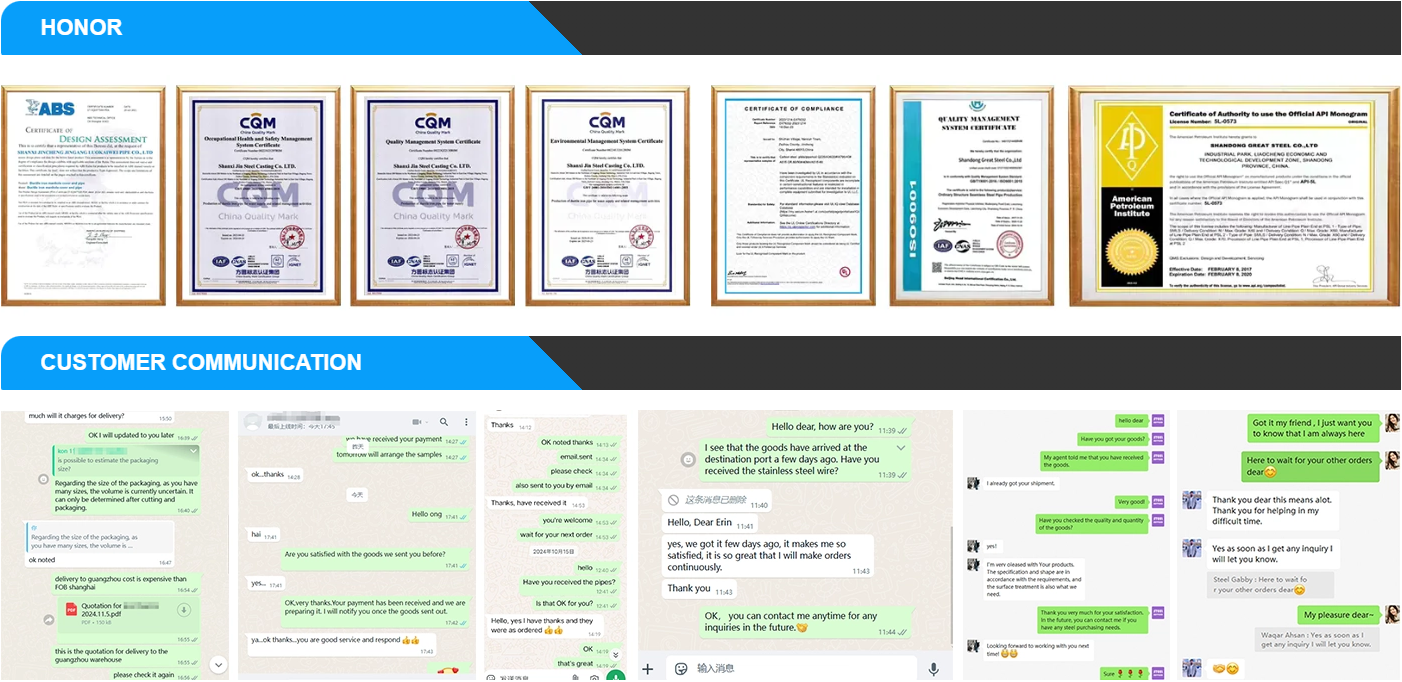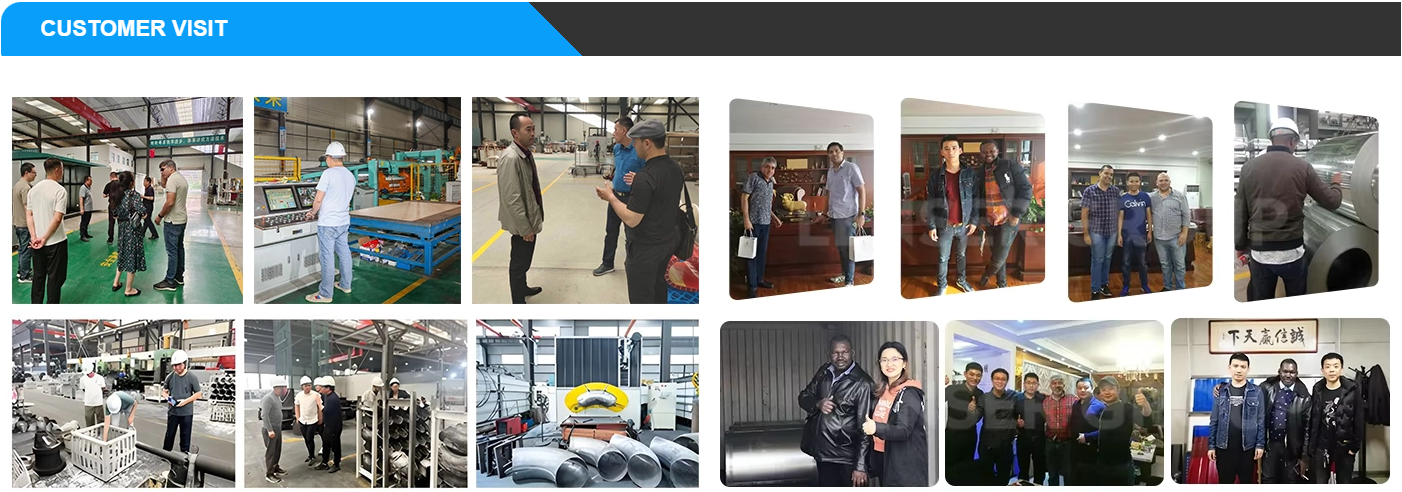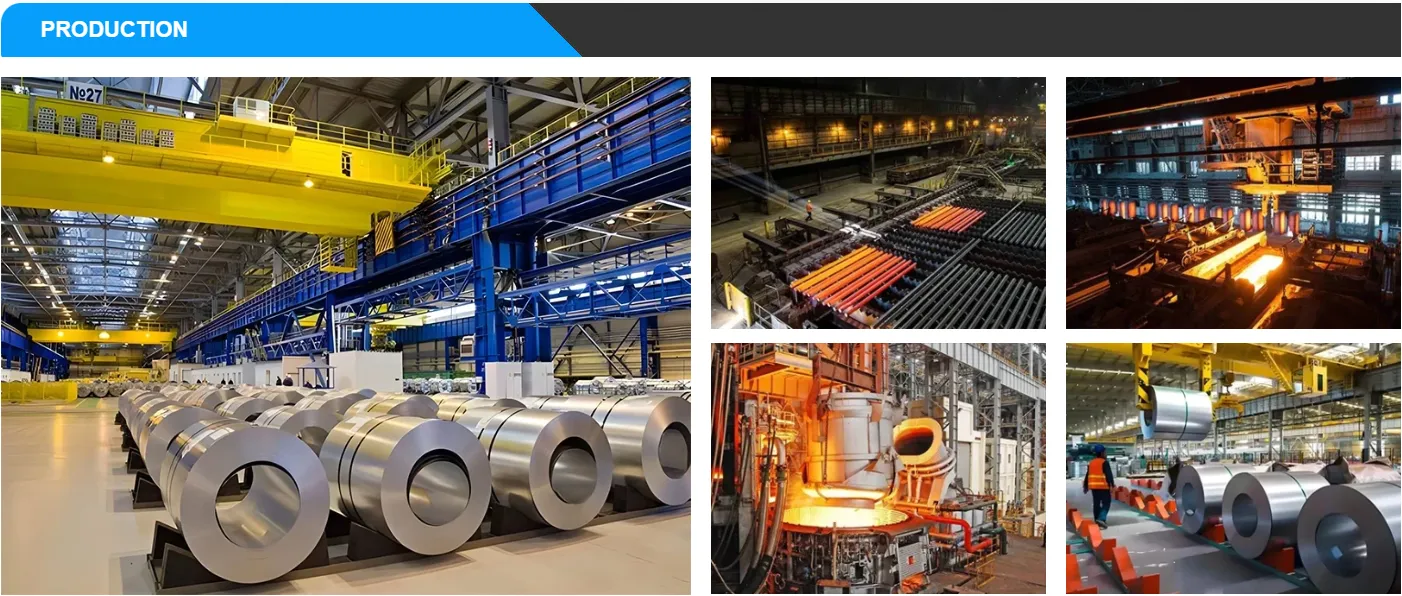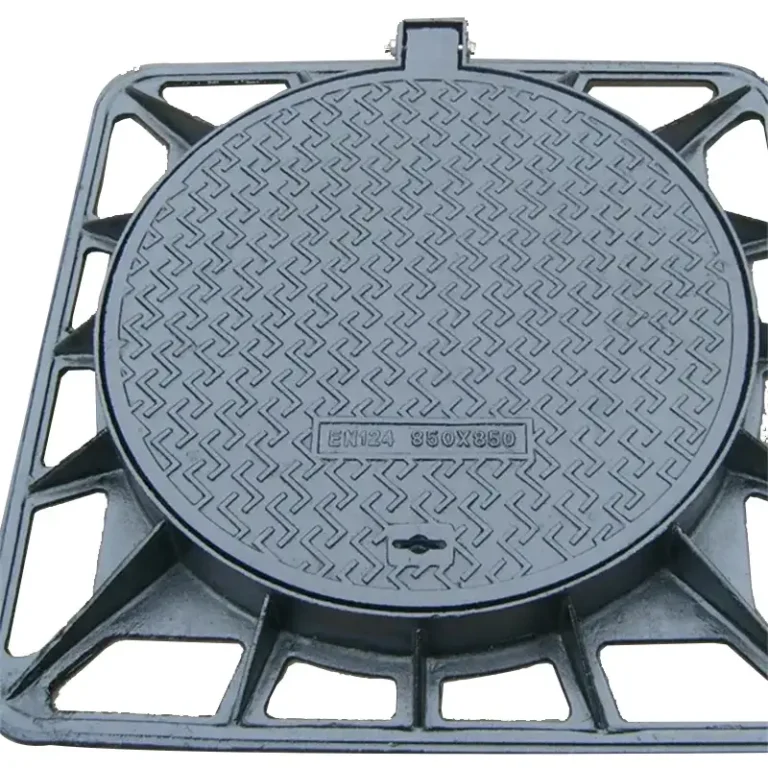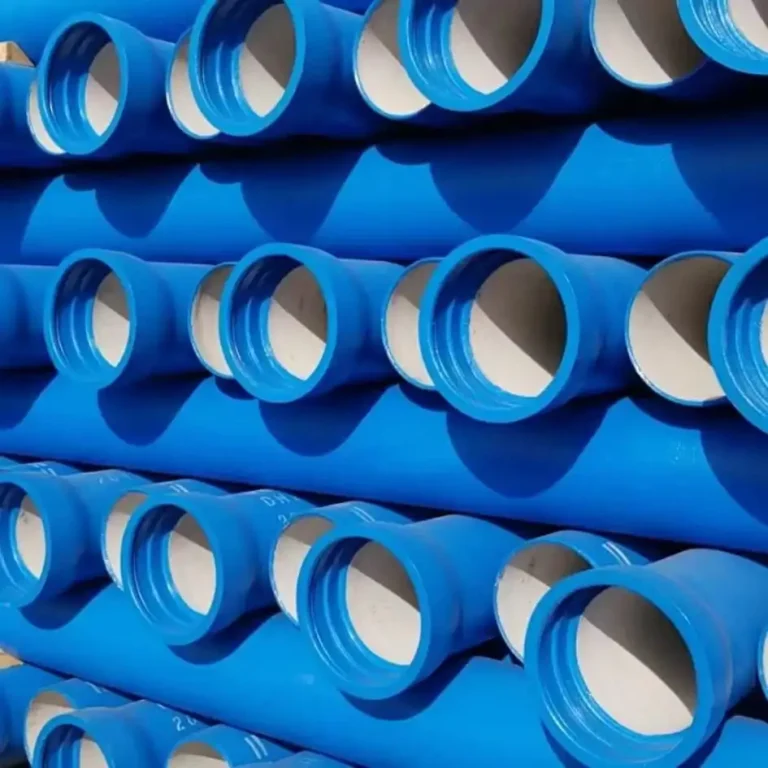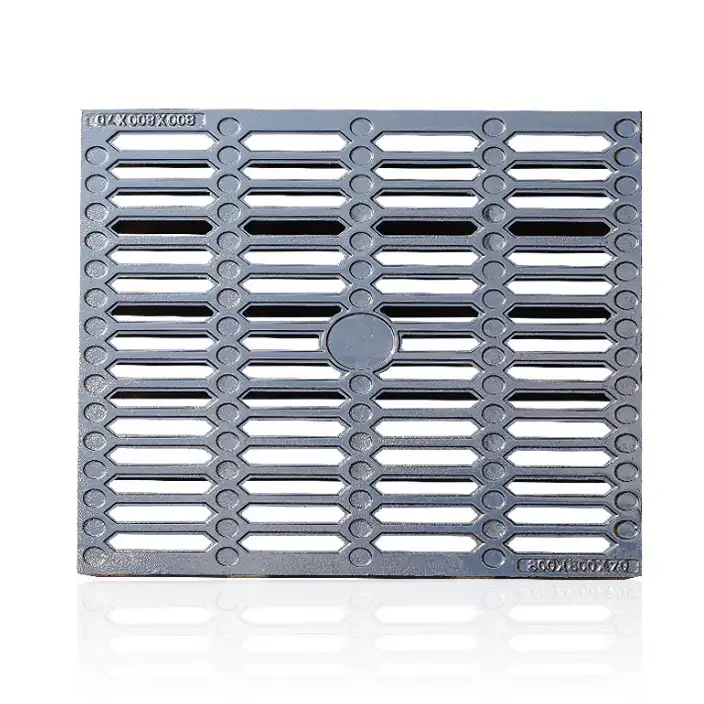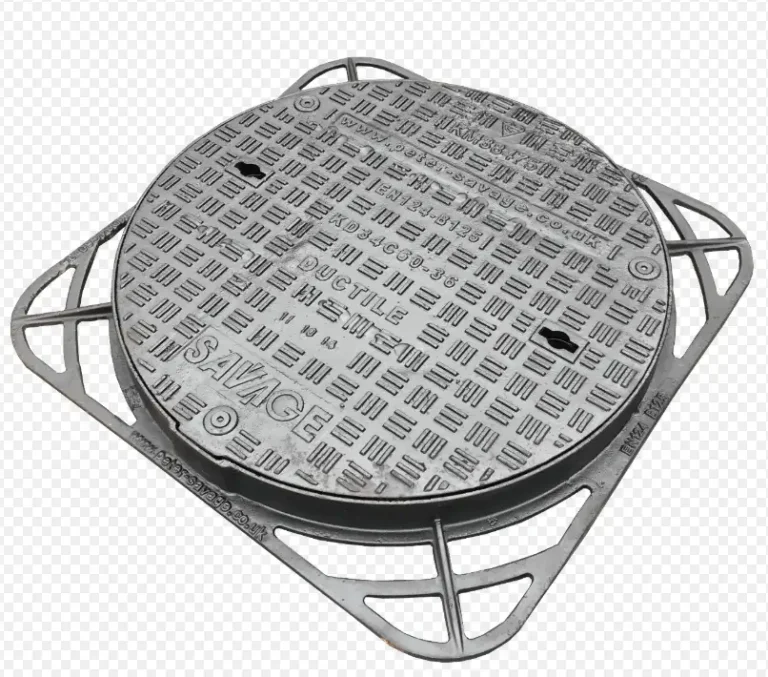Application Scenarios
Ductile iron pipes are widely used wherever strong, durable pipelines are needed:
-
Municipal Water Supply: DIP is a cornerstone of city water networks. For example, several Arizona water utilities (including Phoenix-area suppliers) have banned PVC and specified ductile iron for their drinking water mains due to its proven reliability. In Aurora, Colorado, the water department uses ductile iron mains for pump-fed loops because it handles high cyclic pressures from pumping cycles with ease. Likewise, Central Arkansas Water continues to rely on DIP for most of its water distribution system, citing its strength and longevity.
-
Industrial Pipelines: Industrial facilities such as power plants, factories and district heating/cooling networks use ductile iron for high-pressure piping. For instance, the Hong Kong New World Centre project installed DN100–900 mm flange-joint ductile iron pipes to distribute chilled water for building cooling. These pipes’ toughness resists internal and external stresses, making them ideal for heavy-duty industrial service.
-
Sewage Systems: Ductile iron is also used in gravity and force mains for wastewater. It has long been the standard material for sewer force mains and pump-station pipelines. Municipalities specify cement-lined DIP for interceptors and treatment plant piping. DIP gravity sewers are designed to withstand heavy loads and corrosive conditions; in fact, many cast-iron gravity sewers over 100 years old are still in service, and ductile iron typically exceeds that performance.
Service Life and Durability
Ductile iron pipe is engineered for exceptional longevity. Industry references note that properly installed DIP often lasts over 100 years. Historical records (e.g. century-old cast iron mains) and ongoing research both support a 100+ year life under normal conditions. Several factors enhance durability:
-
Protective Linings and Coatings: Pipes are cement-mortar lined and asphaltic- or epoxy-coated (NSF-61 certified) to prevent corrosion on the inside and outside. Modern coatings and cathodic-protection (e.g. zinc, V-Bio® polyethylene encasement) greatly extend pipe life.
-
Cathodic Protection: Common methods like polyethylene encasement (standard since 1950s) protect buried pipe from soil corrosion.
-
Robust Design: DIP is inherently resistant to most chemicals and fuels; in fact, “ductile iron pipe does not deteriorate and is impermeable” to hydrocarbons.
-
Century Clubs: Organizations track water mains still in service after 100+ years (the DIPRA Century Club), evidencing ductile iron’s longevity.
Advantages
Ductile iron pipe offers key benefits over alternative materials:
-
High Strength & Impact Resistance: DIP has exceptional tensile and impact strength, allowing it to withstand heavy loads (traffic, earth loads) and shocks (water hammer, earthquakes). American Ductile Iron Pipe notes that its products “have the high-impact strength and toughness to withstand shocks usually encountered in transportation, handling and installation”. Designed per ANSI/AWWA standards, it can endure deep burial and high pressures.
-
Flexibility: Unlike rigid pipes, ductile iron behaves as a flexible conduit under load. This design separates internal pressure and external loadings, which provides added safety. The steel reinforcement in the pipe wall allows slight deflection (typically up to 3–5% of diameter) without damage, accommodating ground shifts or installation curves.
-
Corrosion Resistance: Modern cement linings and external coatings give DIP excellent corrosion resistance – often equal to or better than old cast iron. Decades of field tests confirm that ductile iron resists soil and water corrosivity. (Unprotected DI can still handle moderately aggressive soils for many decades.)
-
Cost-Effectiveness: Over the pipeline’s life, ductile iron is very cost-effective. Studies show it lasts much longer than plastic pipe (often 100+ years vs ~50–60 for PVC) and thus has lower maintenance and replacement costs. According to ASCE, DIP yields “significant cost savings” over plastic with lower operating costs.
-
Environmental Sustainability: Ductile iron is environmentally friendly – it contains at least 90% recycled material and is 100% recyclable at end of life. Its smooth interior reduces pumping energy (lower head loss than other small-ID pipes), and it has lower greenhouse emissions (both in production and operation) than many alternatives.
-
Reliability and Safety: With its ductile (tough) iron matrix, DIP is highly reliable under extreme conditions. It performs well during natural disasters (earthquakes, floods, fires) and provides secure containment (no seepage or failures). There are no concerns about toxic leaching (as with some plastics), and ductile iron pipe’s integrity safeguards water quality.
International Standards
Ductile iron pipes are produced to strict global standards that specify diameters, wall thicknesses, pressure ratings and materials. Key references include:
-
ISO 2531: International standard for cement-lined ductile iron pipes for water supply.
-
EN 545 / EN 598: European standards for ductile iron pipes for water (EN 545) and for sewage (EN 598).
-
ANSI/AWWA C150/A21.50 & C151/A21.51: American Water Works Association standards for DI pipe design and manufacture.
-
AWWA C207: Specifies flanges used with DI pipe.
-
ASTM A746: Covering ductile iron gravity sewer pipe. These standards ensure consistency. For example, AWWA and ISO/EN groups define standard outside diameters and nominal (DN) designations for each class (pressure rating) of pipe.
Nominal Sizes & Outside Diameters
Ductile iron pipe is available in a wide range of standard nominal diameters (DN) with corresponding outside diameters. The table below compares common sizes:
| Nominal Size (DN) | Outside Diameter (mm) |
|---|---|
| DN80 (3″) | 100.6 |
| DN100 (4″) | 121.9 |
| DN150 (6″) | 175.3 |
| DN200 (8″) | 229.9 |
| DN250 (10″) | 281.9 |
| DN300 (12″) | 335.2 |
| DN350 (14″) | 388.6 |
| DN400 (16″) | 442.0 |
| DN450 (18″) | 495.3 |
| DN500 (20″) | 548.6 |
| DN600 (24″) | 655.3 |
| DN750 (30″) | 812.8 |
| DN900 (36″) | 972.8 |
| DN1050 (42″) | 1130.3 |
| DN1200 (48″) | 1290.3 |
| DN1350 (54″) | 1450.3 |
| (Nominal DN vs. outside diameter, per industry standards) |
Installation and Connection
Ductile iron pipe is relatively easy to install with common jointing methods:
-
Push-On (Tyton) Joints: The most popular joint, it uses a rubber gasket in the bell (spigot end of one pipe fits into the bell of the next). The gasket seals and retains the joint under pressure. Assembly only requires lubricant and simple tools – no hot work or welding. (Push-on joints provide fully restrained connections when properly assembled.)
-
Mechanical (Gland) Joints: These have a bolted flange and gland clamped around the pipe spigot, compressing a gasket. They are used when line flexibility or future disassembly is needed, and can also be restrained for thrust. Torqueing bolts to specified tension ensures the pipe ends stay sealed.
-
Flanged Connections: DI pipes can have flanged ends (made to ANSI/AWWA C207 dimensions) for connecting to valves, pumps, meters or other pipe materials. Flange adapters and coupling adapters allow transition to steel or PVC lines. Flanged joints are common in large-diameter mains and building services.
-
Trenched Installation: Pipes are typically buried in compacted gravel or sand bedding. Proper trench width and depth (see AWWA C600) ensure the pipes are supported. During installation, care is taken to prevent pipe flotation in high groundwater. After laying, pipes are restrained (thrust blocks or anchors) at bends, tees and valves to handle pressure forces.
-
Corrosion Control: In corrosive soil or high-risk environments, additional measures like cement mortar lining, epoxy coatings, polyurethane linings or cathodic protection (e.g., cathodic sacrificial anodes) are employed. Polyethylene encasement has been a standard wrap for decades where needed.
In the field, ductile iron pipes are laid in trenches with excavators and then joined section by section. The corrugated “peen” pattern on the pipe exterior (visible on DI pipe surfaces) not only aids manufacturing but also helps the surrounding soil grip the pipe.
FAQ (Frequently Asked Questions)
-
Q: How long will ductile iron pipe last?
A: With proper design and protection, ductile iron mains often exceed 100 years of service. Decades of performance data (and century-old cast iron examples) support this lifespan. Regular inspections and coatings help maximize longevity. -
Q: Is DIP compatible with water safety standards?
A: Yes. Ductile iron pipe and linings are certified for potable water. The cement-mortar lining meets NSF-61 (or equivalent) for drinking water, and external coatings are also safe. DI does not leach harmful chemicals into water. -
Q: How does ductile iron compare to PVC or HDPE?
A: DI has much higher strength and pressure ratings. Its service life is substantially longer (>100 years vs ~50 for PVC). DI is less flexible than HDPE but more rigid in cross-section. It’s often used where high strength or long-term performance is required. DI and plastic can be joined with special couplings, but each material’s outside diameter and joint type must be matched carefully. -
Q: What maintenance do DIP pipelines need?
A: Very little. Annual or periodic checks for leaks and corrosion are recommended. Pipes with protective coatings rarely need re-coating for many decades. After installation, joints require no adjustment unless the line is modified. Service valves and hydrants on DI mains typically last decades with minimal upkeep. -
Q: Can DIP handle ground movement or earthquakes?
A: Yes. The ductility of the iron plus flexible joints allows DI systems to absorb soil shifts. Special restrained joints and seismic fittings are available. DI’s toughness makes it superior in seismic conditions compared to brittle materials. -
Q: Are DIP diameters and pressure classes standardized globally?
A: Yes. You’ll find consistent nominal sizes worldwide per ISO and EN standards (e.g. ISO 2531, EN 545/598) and the US (AWWA C151/C150). Pressure classes are chosen by wall thickness. Always confirm the standard (e.g. Class 350 or K9) for proper thickness and joint type. -
Q: How is DIP protected from corrosion in sewage (aggressive) environments?
A: For sanitary sewers, a cement lining is typically used (though it offers limited protection if sulfide attack occurs). In force mains or internals, more robust linings (epoxy, polyurethane) or painted layers can be applied. In general sewage conditions, DI’s protective oxide layer and any linings resist corrosion better than unlined alternatives.
Case Studies
Municipal Water Supply
-
Phoenix‐Mesa (AZ) Water District: In Arizona, eight major water agencies serving Phoenix, Mesa, Scottsdale and Tempe prohibit PVC for water mains. They rely on ductile iron for its reliability and long life.
-
Aurora, Colorado: The city installed ductile iron pipes for high-pressure pumping lines. Water engineers found that DIP “is the best material to handle the stresses” from cyclic pumps, resulting in zero main failures under heavy use.
-
Central Arkansas Water (Little Rock, AR): The utility continues to use DIP almost exclusively. Its engineering director notes that DI pipelines have proven their durability and resilience over decades of service, leading to fewer leaks and breaks compared to alternative materials.
Industrial Pipelines
-
Hong Kong District Cooling (New World Centre): Flanged DN100–900 ductile iron pipes were installed inside a large building to circulate chilled water for air conditioning. The high-strength, leak-resistant joints ensured efficient cooling with minimal maintenance.
-
Power Plant Cooling Systems: Many power stations use ductile iron for condenser cooling water lines and firewater systems. In such cases, DIP’s high pressure rating and toughness allow it to survive vibration, heat, and occasional water hammer with minimal risk of rupture.
-
Chemical and Industrial Parks: Ductile iron’s corrosion resistance (with appropriate linings) makes it suitable for non-aggressive chemical transfer or service water lines in factories. Large industrial campuses in Asia and Europe routinely install lined DIP for raw water, process water, and treated effluent.
Sewage Systems
-
Pressure Sewer Force Mains: Ductile iron is the standard choice for pressurized sewage mains and pump stations. For example, many wastewater utilities replace old failing force mains with cement-lined DI pipes to minimize leaks and maintenance. Its pressure classes accommodate the high back-pressures in these lines.
-
Gravity Sewer Interceptors: In cities upgrading deep sewers, ductile iron pipes (often with thicker cement lining) are used under highways and rivers. Design guidelines show DI sewer mains with 100-year life and very low infiltration, reducing long-term rehab costs.
-
Treatment Plant Piping: At wastewater treatment plants, DI pipe carries sludge, digester gas (in gas lines), and process flows. Its structural integrity under heavy cover and its longevity (resisting sewer gases better than mild steel) make it a reliable choice for plant owners.
Sources: Product data and standards from AWWA and ISO, and industry reports, along with research from the Ductile Iron Pipe Research Association and case examples.
ductile iron pipe dimensions
| Pipe body weight (kg/m) | |||||||||||||||
| (Inside Diameter) | (Outside Diameter) | Socket Weight | K8 | K9 | K10 | C class | Total weight of Active Length=6M (kg) | Total weight of Active Length=5.7M (kg) | |||||||
| DN(mm) | OD(mm) | ≈ kg | Class | kg/m | K8 | K9 | K10 | C class | K8 | K9 | K10 | C class | |||
| 80 | 98 | 3.40 | 12.20 | 12.20 | 12.20 | C40 | 9.10 | 77.00 | 77.00 | 77.00 | 58.00 | 73.00 | 73.00 | 73.00 | 55.00 |
| 100 | 118 | 4.30 | 14.90 | 15.10 | 15.10 | C40 | 11.12 | 93.70 | 95.00 | 95.00 | 71.00 | 90.00 | 91.00 | 90.00 | 68.00 |
| 125 | 144 | 5.70 | 18.90 | C40 | 119.00 | ||||||||||
| 150 | 170 | 7.10 | 21.80 | 22.80 | 22.80 | C40 | 16.48 | 138.00 | 144.00 | 144.00 | 106.00 | 132.00 | 138.00 | 137.00 | 101.00 |
| 200 | 222 | 10.30 | 28.70 | 30.60 | 30.60 | C40 | 22.62 | 183.00 | 194.00 | 194.00 | 146.00 | 174.00 | 185.00 | 185.00 | 139.00 |
| 250 | 274 | 14.20 | 35.60 | 40.20 | 44.30 | C40 | 32.63 | 228.00 | 255.00 | 280.00 | 210.00 | 218.00 | 244.00 | 267.00 | 200.00 |
| 300 | 326 | 18.90 | 45.30 | 50.80 | 56.30 | C30 | 43.90 | 290.00 | 323.00 | 357.00 | 282.00 | 278.00 | 309.00 | 340.00 | 269.00 |
| 350 | 378 | 23.70 | 55.90 | 63.20 | 69.60 | C30 | 51.88 | 359.00 | 403.00 | 441.00 | 335.00 | 343.00 | 384.00 | 420.00 | 319.00 |
| 400 | 429 | 29.50 | 67.30 | 75.50 | 83.70 | C30 | 60.78 | 433.00 | 482.00 | 532.00 | 394.00 | 414.00 | 460.00 | 506.00 | 376.00 |
| 450 | 480 | 38.30 | 80.00 | 89.30 | 99.00 | C30 | 73.30 | 515.00 | 575.00 | 632.00 | 472.00 | 492.00 | 550.00 | 597.00 | 450.00 |
| 500 | 532 | 42.80 | 92.80 | 104.30 | 115.60 | C30 | 87.20 | 600.00 | 669.00 | 736.00 | 566.00 | 572.00 | 638.00 | 702.00 | 540.00 |
| 600 | 635 | 59.30 | 122.00 | 137.30 | 152.00 | C30 | 120.62 | 791.00 | 882.00 | 971.00 | 783.00 | 755.00 | 842.00 | 926.00 | 747.00 |
| 700 | 738 | 79.10 | 155.00 | 173.90 | 193.00 | C25 | 142.15 | 1009.00 | 1123.00 | 1237.00 | 932.00 | 963.00 | 1071.00 | 1179.00 | 889.00 |
| 800 | 842 | 102.60 | 192.00 | 215.20 | 239.00 | C25 | 177.07 | 1255.00 | 1394.00 | 1537.00 | 1165.00 | 1197.00 | 1330.00 | 1465.00 | 1112.00 |
| 900 | 945 | 129.60 | 232.00 | 260.20 | 289.00 | C25 | 197.68 | 1521.00 | 1691.00 | 1863.00 | 1446.00 | 1452.00 | 1613.00 | 1777.00 | 1257.00 |
| 1000 | 1048 | 161.30 | 275.00 | 309.30 | 343.20 | C25 | 266.28 | 1811.00 | 2017.00 | 2221.00 | 1759.00 | 1729.00 | 1925.00 | 2118.00 | 1679.00 |
| 1100 | 1152 | 194.70 | 362.80 | 2372.00 | |||||||||||
| 1200 | 1255 | 237.70 | 374.00 | 420.10 | 466.10 | C25 | 373.88 | 2482.00 | 2758.00 | 3034.00 | 2481.00 | 2370.00 | 2632.00 | 2894.00 | 2369.00 |
| 1400 | 1462 | 279.30 | 547.20 | 3563.00 | |||||||||||
ductile iron pipe Mechanical property
| Mechanical Property | |||||||
| Nominal Diameter | Hydraulic test | Tensile strength | Elogation | Yield strength | Bending strength | Brinell hardness | Thickness of cement lining |
| DN(MM) | Mpa | Mpa | % | Mpa | Mpa | HB | mm |
| DN80-DN300 | 5 | ≥420 | ≥10 | ≥300 | ≥590 | ≤230 | 3 |
| DN350-DN600 | 4 | ≥420 | ≥10 | ≥300 | ≥590 | ≤230 | 5 |
| DN700-DN1000 | 3.2 | ≥420 | ≥10 | ≥300 | ≥590 | ≤230 | 6 |
| DN1100-DN1600 | 2.5 | ≥420 | ≥7 | ≥300 | ≥590 | ≤230 | ….. |
